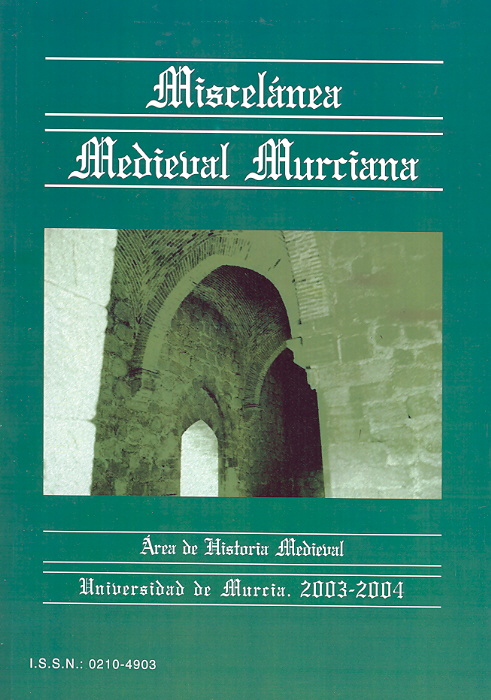LA CONCIENCIA DE LINAJE A TRAVÉS DE LA REPRESENTACIÓN HERÁLDICA: EL EJEMPLO DE LA FAMILIA RIQUELME (SS. XIII-XV)
Abstract
In this article we analyse briefly the genesis of the building up of glory and social distinction of oligarchy through the material sources, which was called «material and symbolic culture» by historiography and constituted a constant feature of old lineages belonging to nobilty. From the point of view of such culture, a lineage memory was constructed , which belonged to the main surnames and lineages that fought against muslims of nazari Kingdom of Granada during the last period of the Reconquest. In that way, around the mythical figure of the founder of the lineage, who was the first member settled in the Kingdom, the bases of his power and social prestige began to be installed, lasting throughout consecutive generations. Based upon important historical sources such as chronicles, memorials, genealogies and the heraldry, we introduce briefly, through the example of Riquelme lineage, how the family, using such material elements, perpetuated his memory and «lineage self-awareness» in order to consolidate their social status within the oligarchyDownloads
Las obras que se publican en esta revista están sujetas a los siguientes términos:
1. El Servicio de Publicaciones de la Universidad de Murcia (la editorial) conserva los derechos patrimoniales (copyright) de las obras publicadas, y favorece y permite la reutilización de las mismas bajo la licencia de uso indicada en el punto 2.
2. Las obras se publican en la edición electrónica de la revista bajo una licencia Creative Commons Reconocimiento-NoComercial-SinObraDerivada 3.0 España (texto legal). Se pueden copiar, usar, difundir, transmitir y exponer públicamente, siempre que: i) se cite la autoría y la fuente original de su publicación (revista, editorial y URL de la obra); ii) no se usen para fines comerciales; iii) se mencione la existencia y especificaciones de esta licencia de uso.
3. Condiciones de auto-archivo. Se permite y se anima a los autores a difundir electrónicamente las versiones pre-print (versión antes de ser evaluada) y/o post-print (versión evaluada y aceptada para su publicación) de sus obras antes de su publicación, ya que favorece su circulación y difusión más temprana y con ello un posible aumento en su citación y alcance entre la comunidad académica. Color RoMEO: verde.





